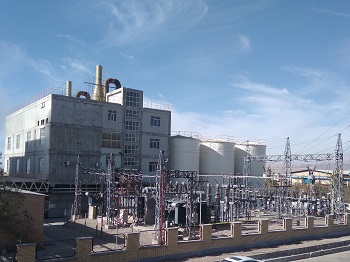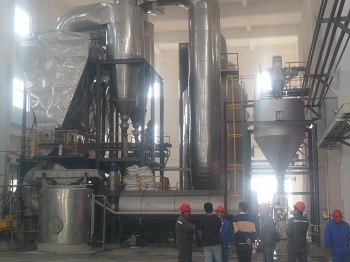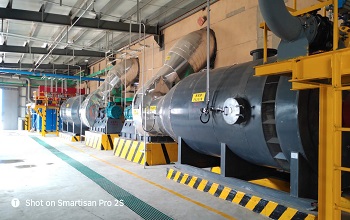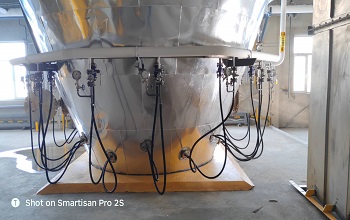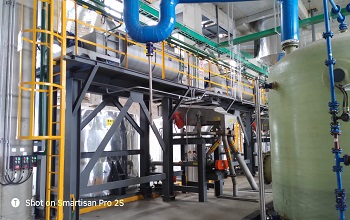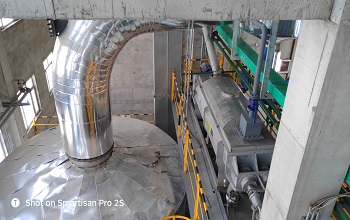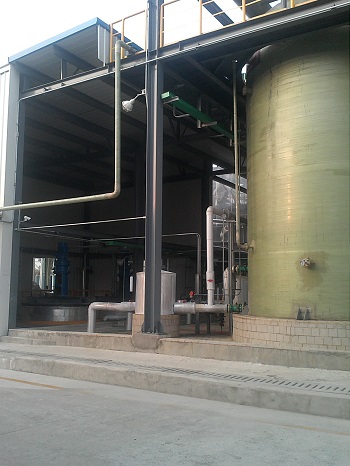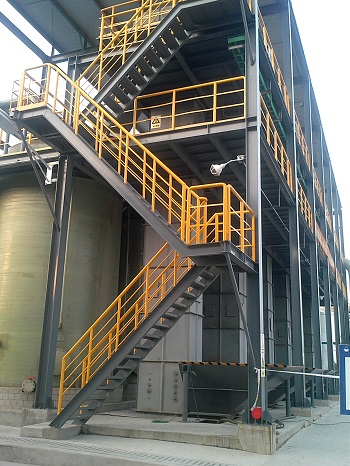Calcium chloride is a white or off-white porous block, granular and powdery product. It is odorless, slightly bitter, highly hygroscopic and extremely deliquescent when exposed to air. It is easily soluble in water while releasing a lot of heat. Calcium chloride has a wide range of uses and is mostly used as a desiccant and dehydrating agent. Its aqueous solution is the main refrigerant for ammonia refrigerators. It can accelerate the hardening of concrete and increase the cold resistance of building mortar, and is an excellent building antifreeze. It is used as antifogging agent and deicing agent in ports and airports, road dust collector and fabric fireproofing agent.
The production methods of calcium chloride is hydrochloric acid and limestone method. The products are of good quality and widely used. At present, most of them are produced by by-product hydrochloric acid, mainly anhydrous calcium chloride.
Process introduction
Reaction section: The hydrochloric acid sent from the tank area is added to the reaction tank containing limestone through the hydrochloric acid high-level tank. The hydrochloric acid reacts with the limestone in the tank to generate calcium chloride mother liquor, and the acidic calcium chloride solution generated by the reaction is put into the neutralization tank by self-flow. Add calcium hydroxide to the neutralization tank to neutralize excess acid. The neutralized calcium chloride solution is pumped to the filter press for continuous filtration, and the filtered clear liquid is put into the mother liquor receiving tank by self-flow. The mother liquor in the mother liquor receiving tank is pumped to the large storage tank of calcium chloride mother liquor for static storage. During the reaction, carbon dioxide will be released, and part of the tail gas such as hydrogen chloride will be entrained. The acid waste gas generated by the reaction tank and the hydrochloric acid high-level tank is all collected and absorbed by the two stage tail gas absorption towers, and discharged after reaching the standard.
Chemical equation: 2HCl+CaCO3= CaCl2+H2O+ CO2
Granulation section: the static calcium chloride mother liquor is sent to the circulation tank, and then pumped into the foam absorption tower to wash the high temperature tail gas from the granulation tower, and the calcium chloride dust and heat in the tail gas are recovered to concentrate calcium chloride mother liquor. The concentrated calcium chloride mother liquor is pumped into the atomizing nozzle on the granulation tower, under the action of high temperature hot air, it is dried to form granular anhydrous calcium chloride, which is then cooled and screened for packaging. The high-temperature tail gas generated during the drying and granulation process is passed into the foam tower, and the circulating calcium chloride mother liquor absorbs part of the heat and calcium chloride dust, and then the tail gas is pumped into the tail gas cylinder by the tail gas fan for air emission.
